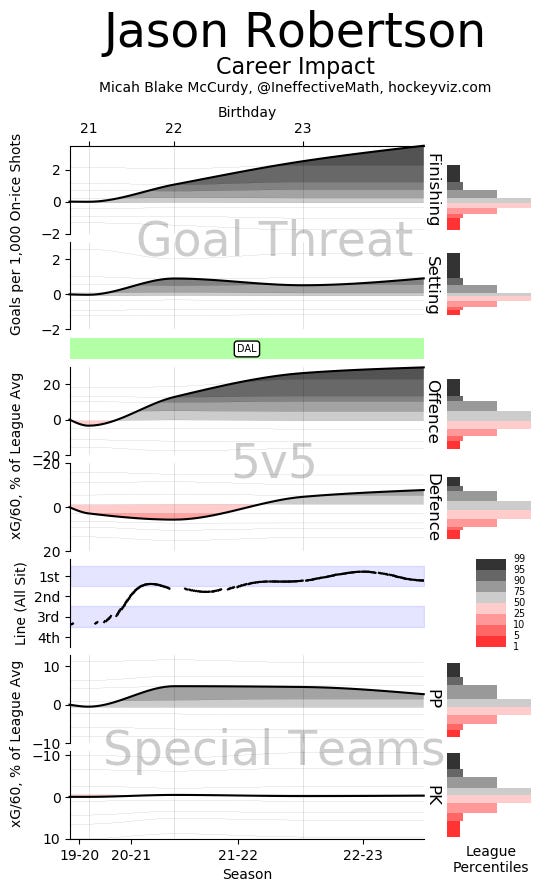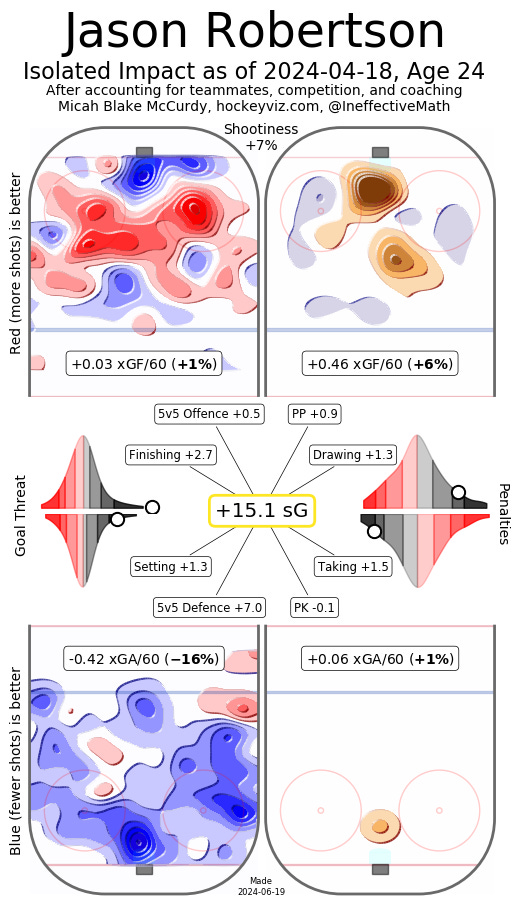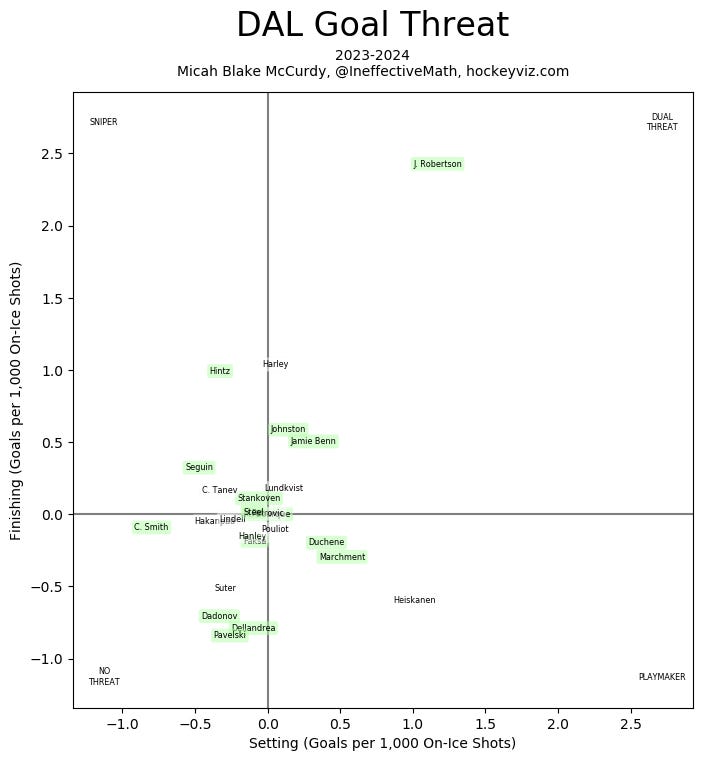Evergreen note: “Analytics” are not mere numbers. They’re models: ways of bridging practical (what happens on ice) and theoretical knowledge (what will or can happen based on ice based on prior events). They help define the conditions of performance over a period of time rather than glimpsing raw plus-minus. The climate versus the weather. These are not meant to be a right or wrong way to look at a hockey game; they’re meant to be useful in understanding the conditions of hockey itself.
The Stat: Setting
The question Setting attempts to answer: How can we calculate pass support, and pass structure?
How it answers that question: Any shot is twice as likely to lead to a goal as a shot without. For years, this has been a blindspot with public data.
Micah Blake McCurdy’s setting model starts by defining passes more likely to lead to a shot using some broad categories: in this case, seam passes, backdoor passes, and breakaway passes.
“Setting” is a term he’s borrowed from volleyball, which refers to players with profiles as someone more likely to set up the shots of others. To quote Micah, “A pass for the purpose of a shot by a player receiving the puck.” This formula is imprecise thanks to NHL tracking. For shots that aren’t recorded by the league, passers are not recorded. To account for this gap, Micah generates a probability for these passes.
Shots taken by forwards are twice as likely to receive passes by other forwards.
Shots taken by defenders are three times as likely to receive passes by other forwards.
To smooth out this data, Micah relies on historical data defined by Corey Sznajder’s tracking project, with a focus on primary assist rates, as these are stable and repeatable.
Corey’s passing will have its own explainer in the future, but it’s worth highlighting here. Corey’s setting data works with three main tiers in ascending order.
Point shot setups have the lowest value.
Passes that assist on center lane shots are above it, increases shooting percentage by a significant margin.
High danger assists, defined as passes from behind the net, the goal line, or across the slot from the face off circles, are the passes most likely to create goals.
A stat for player passing is critical because it further shades in the offensive profile of players. Do players leverage their setting for possession, playmaking, only one and never the other, both, and at what rate?
Sources/Further reading



